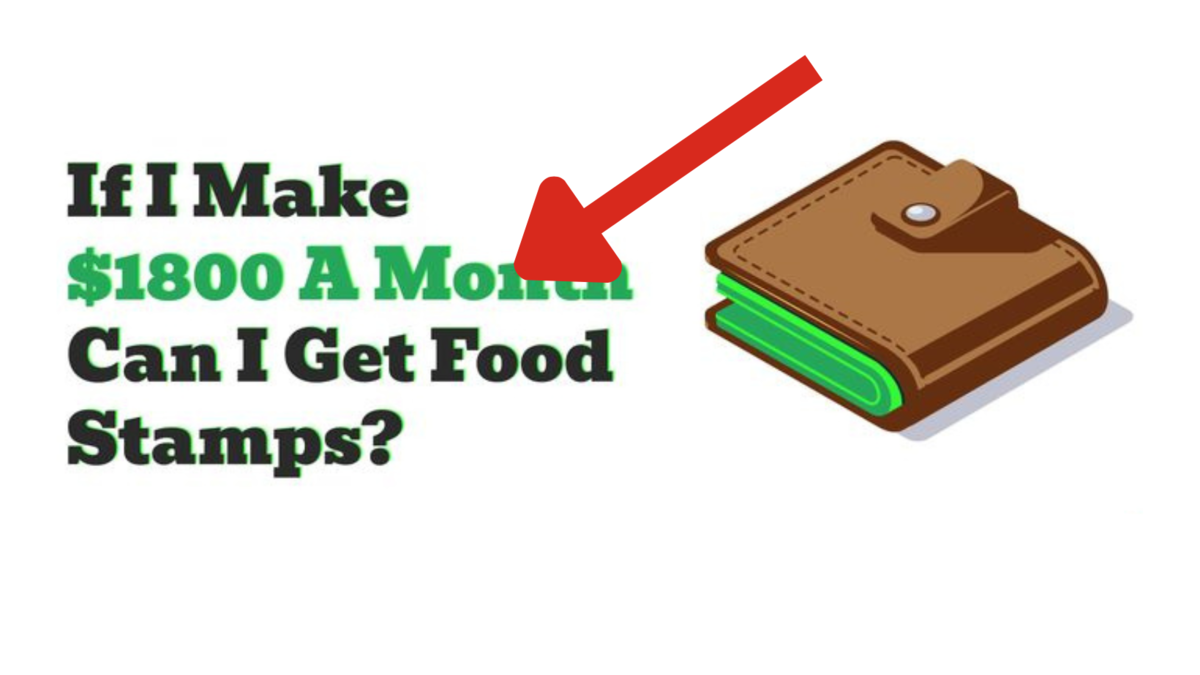If I Make $1800 a Month Can I Get Food Stamps : It depends heavily on your specific situation, but $1,800 a month could potentially make you eligible for SNAP benefits, depending on your household size and other factors.
Can I Get Food Stamps (SNAP) If I Make $1,800 a Month? Your Realistic Guide
when you’re budgeting on $1,800 a month, every dollar counts. Groceries are a major expense, and wondering if you qualify for help like SNAP (Supplemental Nutrition Assistance Program, formerly food stamps) is completely understandable. The answer? It depends heavily on your specific situation, but $1,800 a month could potentially make you eligible for SNAP benefits, depending on your household size and other factors.
If I Make $1,800 a Month Can I Get Food Stamps :
- Household Size is CRUCIAL: This is the biggest factor. The income limits for SNAP are based on how many people live and eat together in your household.
- Single Person (1): $1,800/month ($21,600/year) is above the typical Gross Monthly Income Limit for a 1-person household in most states (which is around $1,580 as of Oct 2023). However, Net Income Limits (after deductions) might still offer a chance.
- Two People (2): $1,800/month is very close to the typical Gross Monthly Limit for 2 people (around $2,137). You have a much stronger chance here, especially after deductions.
- Three People (3): $1,800/month is well below the Gross Monthly Limit for 3 people (around $2,694). Eligibility at this income level for a family of 3 is highly likely, barring other disqualifying factors.
- Four People (4): $1,800/month is significantly below the Gross Monthly Limit for 4 people (around $3,250). Eligibility is very probable.
- Gross vs. Net Income Matters: SNAP looks at both:
- Gross Income: Your total income before any taxes or deductions are taken out. This is the first hurdle.
- Net Income: Your income after certain deductions are applied. This is where $1,800/month often becomes more viable for smaller households. Deductions include:
- A standard deduction for everyone.
- ️ 20% deduction from earned income (money from a job).
- Dependent care costs (if you pay for childcare so you can work or look for work).
- Legally owed child support payments.
- ⚕️ Medical expenses over $35/month for elderly or disabled members.
- ⚡️ Excessive shelter costs (rent/mortgage + utilities) that exceed half of your net income after other deductions.
- Other Key Eligibility Factors: Income isn’t the only thing. SNAP also considers:
- Citizenship/Immigration Status: U.S. citizens and certain qualified non-citizens are eligible.
- Work Requirements: Able-bodied adults without dependents (ABAWDs) aged 18-52 usually have work requirements (20 hrs/week). Some states have waivers.
- Resource Limits: Most households must have assets below $2,750 ($4,250 if a household member is elderly or disabled). This usually excludes your home, one car, and retirement savings.
- State Variations: Some states have slightly higher income limits or different rules (like “Broad-Based Categorical Eligibility” – BBCE – which can lift asset limits and offer higher income thresholds). Always check your specific state’s rules!
What Does This Mean for You at $1,800/month?
- If you are single: Your gross income is likely over the limit, but DON’T GIVE UP. Calculate your net income after deductions, especially if you have high rent, childcare, or medical costs. Apply anyway! Many single individuals qualify after deductions.
- If you have a family: With 2 or more people, your chances of qualifying are significantly higher. Even at $1,800 gross, deductions often bring net income well within limits for families of 3 or more.
The Absolute Best Advice: APPLY!
Seriously. You will never know for sure unless you apply. The application process is free. Eligibility workers are there to calculate your income with all the allowable deductions. They have the precise figures and state-specific rules.
How to Apply (It’s Easier Than You Think):
- Find Your State Agency: Go to the official USDA SNAP website or simply search “[Your State] SNAP application” or “[Your State] Department of Social Services.”
- Use the Pre-Screening Tool (Highly Recommended): Most states offer an online eligibility pre-screener. This isn’t the official application, but it gives you a much better personalized estimate than general guidelines. Search for “[Your State] SNAP pre-screening tool.”
- Gather Documents: You’ll likely need proof of income (pay stubs, benefit letters), ID, rent/mortgage receipts, utility bills, childcare costs, and bank statements.
- Submit Your Application: Apply online, by mail, or in person at your local office. Be honest and thorough.
- Interview: You’ll usually have a short phone interview to verify your information.
Don’t Let Stigma Hold You Back
SNAP exists precisely for hard-working people and families whose budgets are stretched thin. If you qualify, these benefits help you put nutritious food on the table, freeing up cash for other essentials like rent, utilities, or gas. This isn’t a handout; it’s a bridge to help you manage during challenging times.
Bottom Line: Making $1,800 a month doesn’t automatically disqualify you from SNAP. Your household size and allowable deductions make a huge difference. Take the 10 minutes to use your state’s online pre-screener or contact your local SNAP office. You might be surprised at the help available to make your grocery budget a little less stressful. Knowing your options is the first step towards securing the support you may need.
